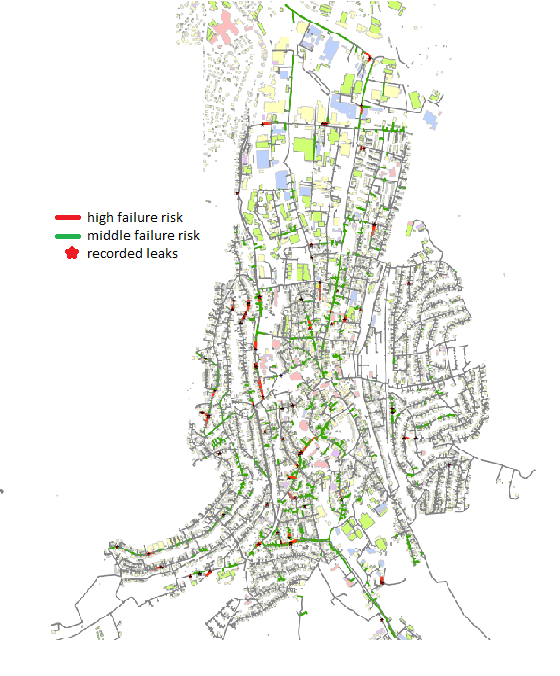WATERnet, GASnet and HEATnet are powerful tools to calculate steady flow processes in randomly meshed pipe networks. The programmes are used to solve operating management, planning and optimization tasks of public utilities networks and of industrial networks. They are tried-and-tested products developed by experienced planners and practitioners in the public utilities industries, which have been successful in the market for over 20 years. The user list encompasses a broad spectrum of utilities companies with up to one million clients.
WATERnet is an interactive programme for the calculation of pipeline networks with incompressible transmission substances. It is primarily intended for the calculation of water supply systems, but other substances can also be calculated.
GASnet is designed for the calculation of pipeline networks with compressible transmission substances. It is primarily intended for calculating gas supply systems at all pressure stages; however, other compressed air networks or similar networks can also be incorporated and calculated.
HEATnet is an interactive program for the calculation of double-pipe systems with incompressible media. Preferably, the insert for the calculation of district and local heating systems is provided.
Application areas
With WATERnet / GASnet / HEATnet the planning and operating tasks occurring in the utilities industries can quickly and reliably be mastered.
Performance characteristics
- WATERnet / GASnet / HEATnet 6.0 are fully integrated into Bricscad* and are therefore fully AutoCad compatible
- Completely efficient 2D and 3D-CAD functionality with high performance and stability
- Referencing of graphical data inventory, e.g. as background for model development via standard graphic formats (DWG, DXF, PDF, JPG, …)
- Efficient calculation module on the basis of finite element method with outstanding convergence properties
- Diverse graphic evaluation functions through freely definable colour and line thickness classification
- 3D representation of the network model with visualization of calculation results
- Several hydraulically independent zones are possible in one network model
- Random number of load scenarios in one network model (loading condition management)
Typical application scenarios include:
- New plans and expansion plans
- Target grid planning
- Capacity investigations
- Optimization investigations
- Pressure loss calculations
- Fire-fighting water investigations
- Compiling rinsing plans
- Answering supply enquiries
- Recognizing weak points
- Breakdown calculations / breakdown simulations
- Stagnation calculations
- Positioning of measurement points for the water loss monitoring
Find out more about pipeline network calculation and analysis.
